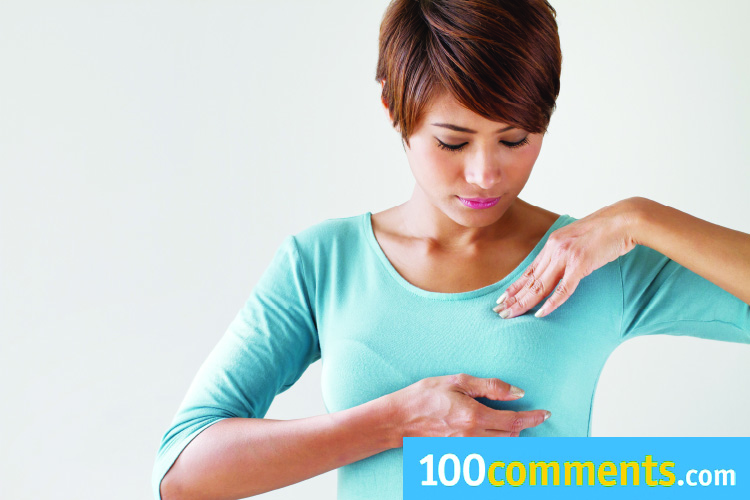Sore nipples and a few other nipple issues are actually quite common among new breastfeeding moms. So much so that they’re sometimes considered a normal part of nursing. However, is that really so?
In the first week after giving birth, it’s normal for your nipples to feel some pain or tenderness that lasts for a few seconds, especially when baby first latches on to the breast. What’s not normal however, is unbearable pain that lasts throughout most or all of the feeding. Ignoring any kind of prolonged nipple pain may lead to breastfeeding problems, so do address them promptly.
Table of Contents
Possible causes for nipple soreness
Some new mums feel hardly any pain during the first few hours or even days of breastfeeding, but don’t count your lucky stars just yet! Soreness in the nipples may sneak up on you, particularly if you’ve been numb on painkillers during the days or weeks after delivery.
There could be a number of causes for nipple pain or discomfort. Here are the most common culprits:
Improper Latch
One very common reason for developing sore nipples in the first few days or weeks of breastfeeding is that the baby is not getting enough of the breast into that tiny mouth during nursing. This is also known as a shallow latch. When this happens, the baby ends up sucking on the nipple rather than the breast, causing first pain and then damage to the nipple. If you notice that your nipple is shaped like a new tube of lipstick, or if you see a stripe running down the middle of your nipple, it means your baby needs to take in more of the breast.
A lactation consultant* can help new mums figure out how to position their baby to get a better, deeper latch during nursing.
Tongue-tie
Another possible cause for sore nipples is that your baby may be tongue-tied. This means that the skin connecting baby’s tongue to the floor of his or her mouth is short or extends too far to the front of the tongue. This may cause nursing problems, but it can be easily fixed with a minor procedure. Inform your doctor or lactation consultant if you are experiencing sore nipples so that they can check your baby and hopefully rule out tongue-tie.
Pump trauma
Improper use of a breast pump is a sure-fire way to end up with painfully sore nipples. In fact, if left unaided, it may damage your nipples. Check to make sure that the flanges (or breast shields) that come with your breast pump are the right size and not too small for your nipples. Also, some women mistakenly turn the suction level up too high. Ask a lactation consultant to help you get set up with the right pump and the right size flanges and to show you the proper way to use your breast pump.
Blistered nipples
A blister on the nipple can appear clear, yellow, or bloody and may cause intense pain during feedings. Friction or suction from a poor latch is most often behind this type of blister. Poorly fitting breast flanges or using a pump that’s set too high are other common causes of friction or suction blisters.
A less common reason for a blister is contact dermatitis, caused most often by a reaction to ointments, creams, or medications on the nipple. Discontinue use of nipple creams or medications until your doctor determines what type of blister you may be suffering from.
Milk Bleb
A milk bleb is what you get when a thin layer of skin grows over a milk duct opening, causing milk to get trapped and clogged up in the duct. The bleb tends to look like a white or yellow dot on the nipple, causing pain on that spot and just behind it too. A milk bleb can heal on its own but it may take several weeks for it to do so. Your lactation consultant or possibly your OB can treat the bleb by peeling the skin away from the area.
Vapospasm
If your nipple looks pale and starts to hurt intensely a few seconds or a few minutes after feeding before returning to its normal colour, it may be due to a spasm in the blood vessels in the nipple. This can be caused by trauma to the nipple, nipple compression, or from yeast on the nipple. A lactation consultant can help you get to the cause of the spasm.
Thrush Infection
A nipple thrush infection originates from thrush in the baby’s mouth which is transferred to the nipples during breast feeding. Signs of thrush include itchy, red, shiny, painful nipples and shooting pains in the breast during or after a feeding. See your doctor to seek safe treatment for this. If symptoms don’t begin to improve after several days of treatment, your doctor may have to check if its eczema, since it has similar symptoms.
How can I treat nipple soreness?
- Contact a lactation consultant for help as soon as possible. She can help diagnose the cause of the pain and can work in conjunction with your doctor if necessary to come up with a treatment plan. The cause of the pain or discomfort will have to be discovered first before coming up with a solution.
- Keep nipples moisturised and healthy
- Basic nipple care is essential for every breast feeding mum and this includes keeping the nipples adequately moisturised at all times. A good nipple cream, balm or ointment made specifically for this purpose will do the trick. Always use nipple care products as indicated on the label for best results. Some brands of nipple creams these days need not even be rinsed off when it’s nursing time.
















